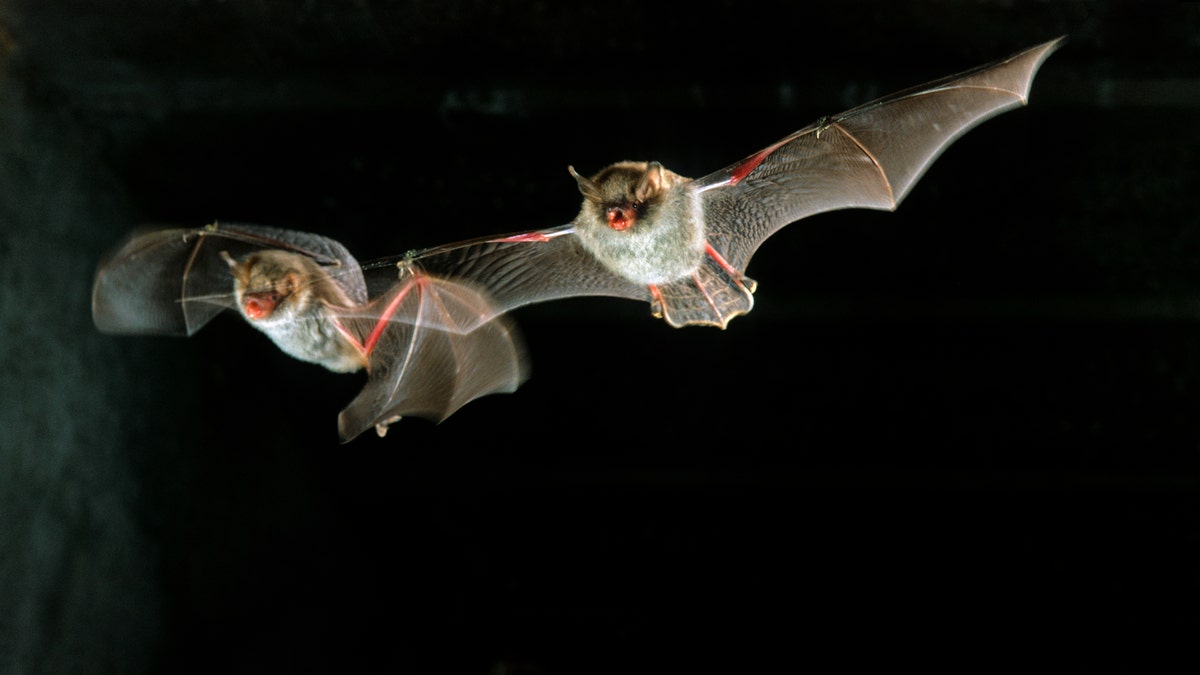Fox News Flash top headlines for July 13
Fox News Flash top headlines are here. Check out what's clicking on Foxnews.com.
Bats offer important clues for the treatment of COVID-19, scientists say.
The virus is believed to have originated in bats and then jumped to humans via an intermediary species, possibly the anteater-like pangolin that is prized in China for its scales used in Chinese medicine as well as its meat.
In addition to SARS-CoV-2, bats have been also been identified as a natural reservoir for other deadly viruses, such as Ebola and rabies, according to researchers at the University of Rochester.
RESEARCHERS FIND 6 NEW CORONAVIRUSES IN BATS
However, bats have long fascinated scientists as a result of their ability to withstand viruses. “Although humans experience adverse symptoms when afflicted with these pathogens, bats are remarkably able to tolerate viruses, and, additionally, live much longer than similar-sized land mammals,” the University of Rochester researchers explain in a statement.

Natterer's bats (Myotis nattereri) flying in cave, Europe - file photo. (Photo by: Arterra/Universal Images Group via Getty Images)
In a review article published in the journal Cell Metabolism, the scientists examine why bats are seemingly unaffected by viruses such as SARS-CoV-2, while discussing their unusual lifespans. “Generally, a species’ lifespan correlates with its body mass; the smaller a species, the shorter its lifespan, and vice versa,” they explain, in the statement. “Many bat species, however, have lifespans of 30 to 40 years, which is impressive for their size.”
The research came about when University of Rochester biology professors Vera Gorbunova and Andrei Seluanov were in Singapore in March prior to COVID-19-linked travel bans. After Singapore went into lockdown, the professors, who are married, quarantined at the home of their colleague Brian Kennedy, director of the Centre for Healthy Aging at the National University of Singapore. Kennedy co-authored the paper with Gorbunova and Seluanov during their quarantine.
7 STRAINS OF CORONAVIRUS FOUND IN BATS IN AFRICA, STUDY FINDS
“With COVID-19, the inflammation goes haywire, and it may be the inflammatory response that is killing the patient, more so than the virus itself,” Gorbunova says. “The human immune system works like that: Once we get infected, our body sounds an alarm and we develop a fever and inflammation. The goal is to kill the virus and fight infection, but it can also be a detrimental response as our bodies overreact to the threat.”
Bats, however, have developed “specific mechanisms that reduce viral replication and also dampen the immune response to a virus,” according to the researchers. As a result, bats’ immune systems control viruses but do not mount “a strong inflammatory response,” the scientists said.
Flight may offer a clue. “Bats are the only mammals with the ability to fly, which requires that they adapt to rapid increases in body temperature, sudden surges in metabolism, and molecular damage,” the scientists said. “These adaptations may also assist in disease resistance.”
NEW CORONAVIRUS FOUND IN BATS IS 'CLOSEST RELATIVE' TO SARS-COV-2 SEEN YET
Additionally, bats live together in large, dense colonies where pathogens and viruses can be easily transmitted. “Bats are constantly exposed to viruses,” said Seluanov, in the statement. “They are always flying out and bringing back something new to the cave or nest, and they transfer the virus because they live in such close proximity to each other.”
This, according to the researchers, means that their immune systems are constantly in an “arms race” with pathogens. “Usually the strongest driver of new traits in evolution is an arms race with pathogens,” said Gorbunova. “Dealing with all of these viruses may be shaping bats’ immunity and longevity.”
This, the researchers said, is not an invitation “for humans to toss their masks and crowd together in restaurants and movie theaters.” The scientists note that evolution takes place over thousands of years, not a few months.
PANGOLINS CAN CARRY CORONAVIRUS-RELATED STRAINS, SCIENTISTS SAY
It has only been in modern history that the majority of the human population has begun living in close proximity in cities, they explain, also citing developments in mobility and global travel. “While humans may be developing social habits that parallel those of bats, we have not yet evolved bats’ sophisticated mechanisms to combat viruses as they emerge and swiftly spread,” they say. One possible result of this is that our bodies experience more inflammation than bats, according to Gorbunova.
Aging also appears to be a factor in humans’ response to COVID-19, they explain.
Set against this backdrop, analysis of bats’ immune systems could provide new targets for human therapies to fight diseases and aging, according to the researchers. “For example, bats have mutated or completely eliminated several genes involved in inflammation; scientists can develop drugs to inhibit these genes in humans,” they explain, in the statement. The University of Rochester professors are hoping to start a new research program working toward that goal.
WHO SAYS CORONAVIRUS ORIGINATED IN BATS, DENIES IT WAS 'MANIPULATED OR CONSTRUCTED' IN A LAB
“Humans have two possible strategies if we want to prevent inflammation, live longer, and avoid the deadly effects of diseases like COVID-19,” Gorbunova said. “One would be to not be exposed to any viruses, but that’s not practical. The second would be to regulate our immune system more like a bat.”
In another project, researchers recently announced the discovery of six new coronaviruses in bats in Myanmar.
Another research effort found seven new strains of coronavirus in bats living in a cave in Gabon, Africa, according to reports.
CLICK HERE TO GET THE FOX NEWS APP
As of Monday morning, more than 12.9 million coronavirus cases have been diagnosed worldwide, with over 3.3 million in the U.S., according to data from Johns Hopkins University. The disease has accounted for at least 569,878 deaths around the world, including at least 135,219 in the U.S.
Fox News Chris Ciaccia, Frank Miles and the Associated Press contributed to this article. Follow James Rogers on Twitter @jamesjrogers

